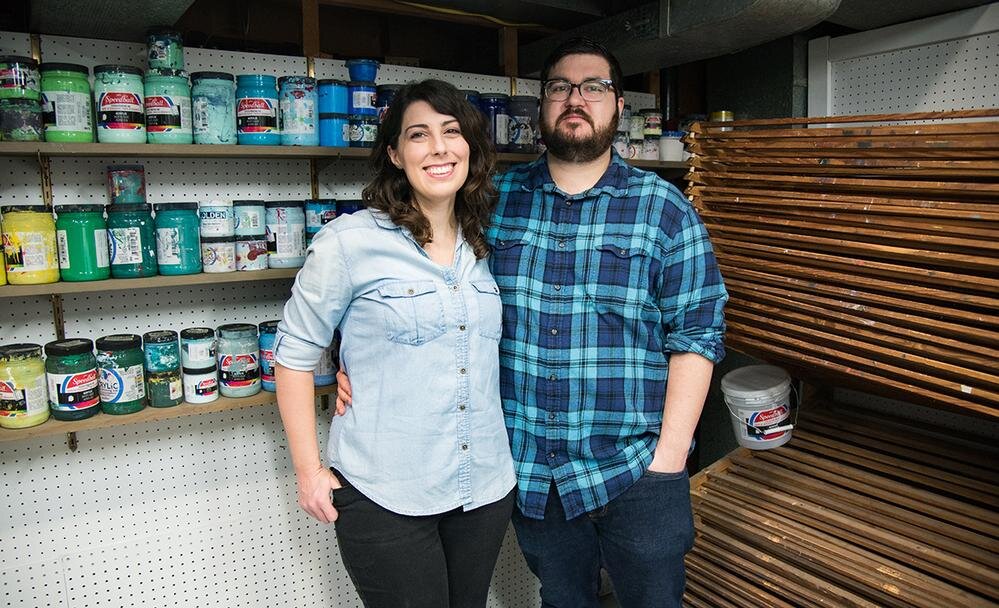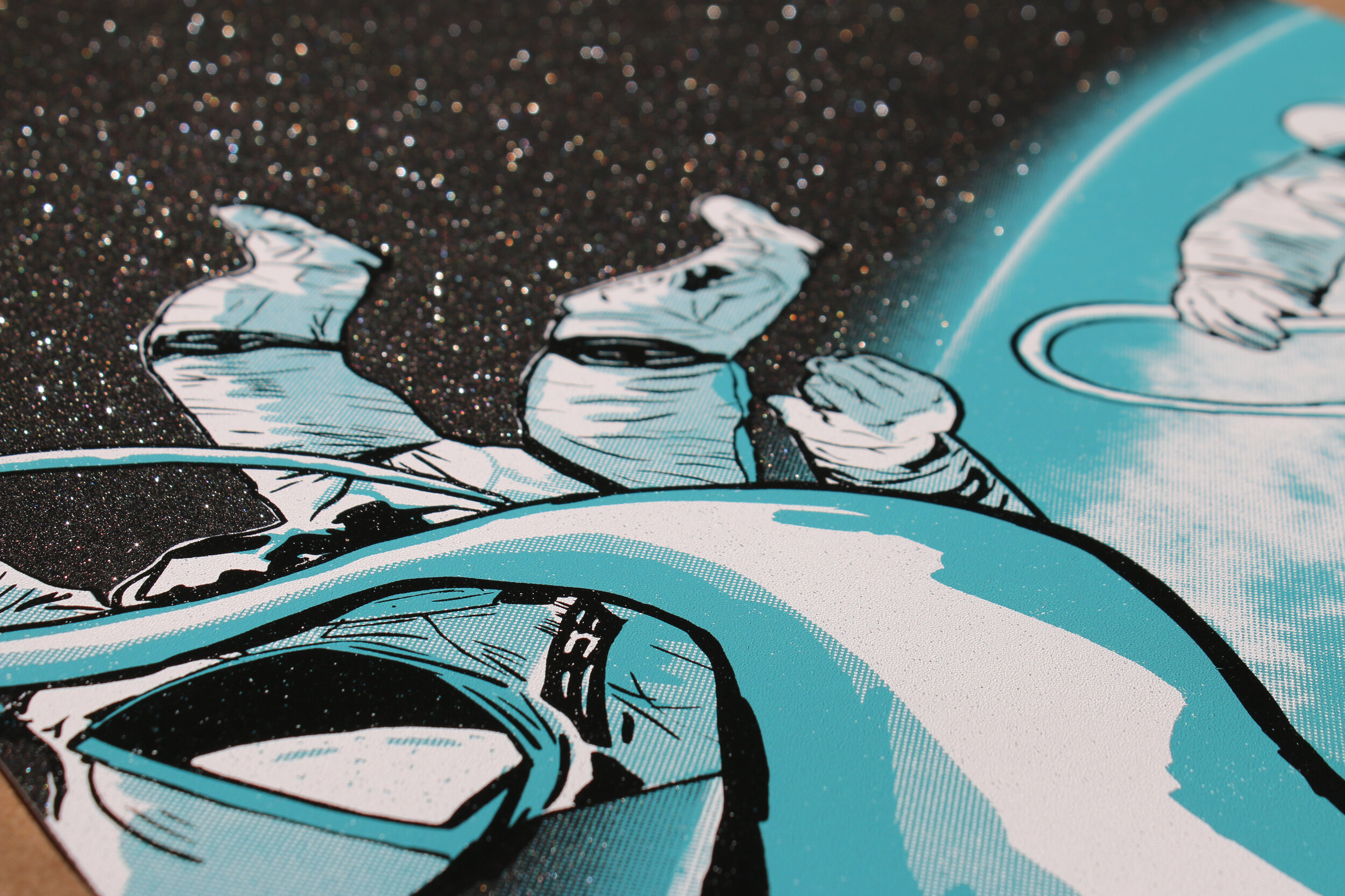Who is Arsenal Handicraft? Tell us about yourself.
Arsenal Handicraft is husband and wife illustration / screen printing duo Dennis and Christina Jacobs. We work out of our home studio in Madison Heights, just outside of Detroit, MI. We've been printmakers for about 12 years and the first thing we screen printed was our wedding invitations. In addition to art prints we have previously worked on concert posters, album artwork, book covers, and most recently beer labels.
What materials did you use for the recent screen print, ‘Tethered’?
We used Mirri Black Diamond Sparkle Paper and Speedball acrylic screen printing ink. We design and print everything in house, which allows us to experiment with different pigments and materials, such as this Mirri paper.
Why did you choose Mirri Sparkle for this project?
We've recently been experimenting by printing on different surfaces and mediums. When we came across the Mirri Sparkle paper, we knew it'd be perfect for a space themed print, which is often the subject matter of our prints. It looks like outer space littered with stars and adds so much depth to the image.
What was your process for creating ‘Tethered’?
Since we knew we wanted to make the most of the glittery finish of Mirri Sparkle paper, we wanted to leave much of the paper exposed. With this in mind we started by thumbnailing different concepts, landing on this image of two astronauts on a space walk. It was ultimately Christina's thumbnail that we developed into the final composition. Once the thumbnail was finalized Christina chose the ink colors, and Dennis began illustrating the full rendering for the print. During the illustration process we have a bit of a back and forth to make sure we both like the direction it is heading. Once finished the artwork was separated into three ink layers, white, blue, and black. These are then outputted to film for use in burning our screens. Once the screens are made, Christina got to work on mixing the ink colors. These were printed by us with Dennis pulling the squeegee and Christina racking the paper.
Were there any challenges using Mirri Sparkle for a screen print?
This was our first time experimenting with a paper such as this and we were super happy with the results! We did notice that the ink sits on top of the paper more than being absorbed, which resulted in slightly longer drying times. We also noticed that the paper grew a bit when we were printing a large flood of ink. This is normal, we just approached it by printing one color per day, which allowed for the paper to dry and relax.
What projects are coming up next?
We are currently entering our Fall show season. Over the next few months we will be set up at various art fairs around the Midwest selling our screen prints. Additionally, we are working on a poster for Artcrank, a bicycle themed art show held in Minneapolis this September. We are also working on another print using Mirri Sparkle paper, this time with Mirri Twilight Sparkle.







